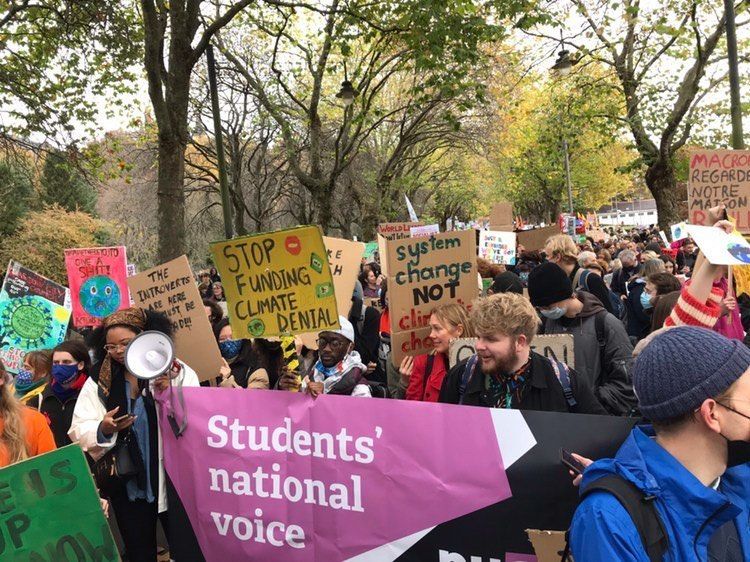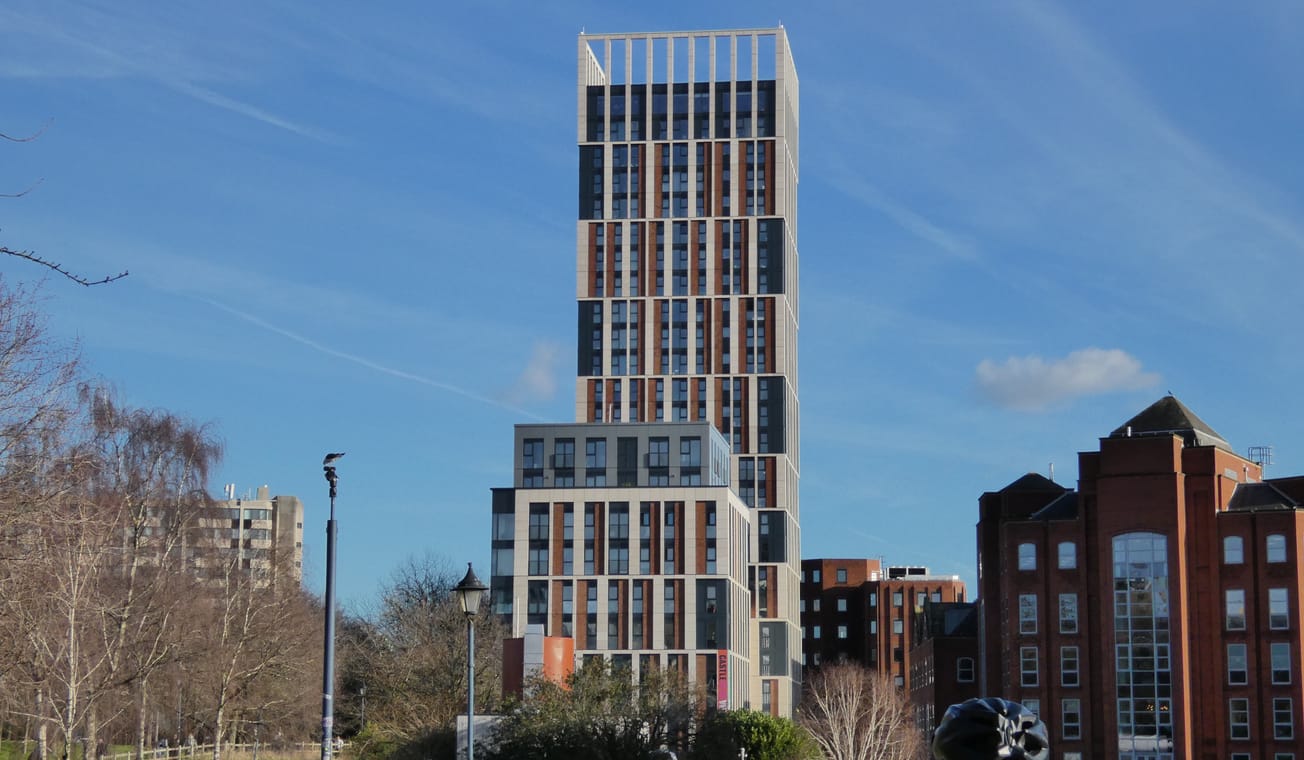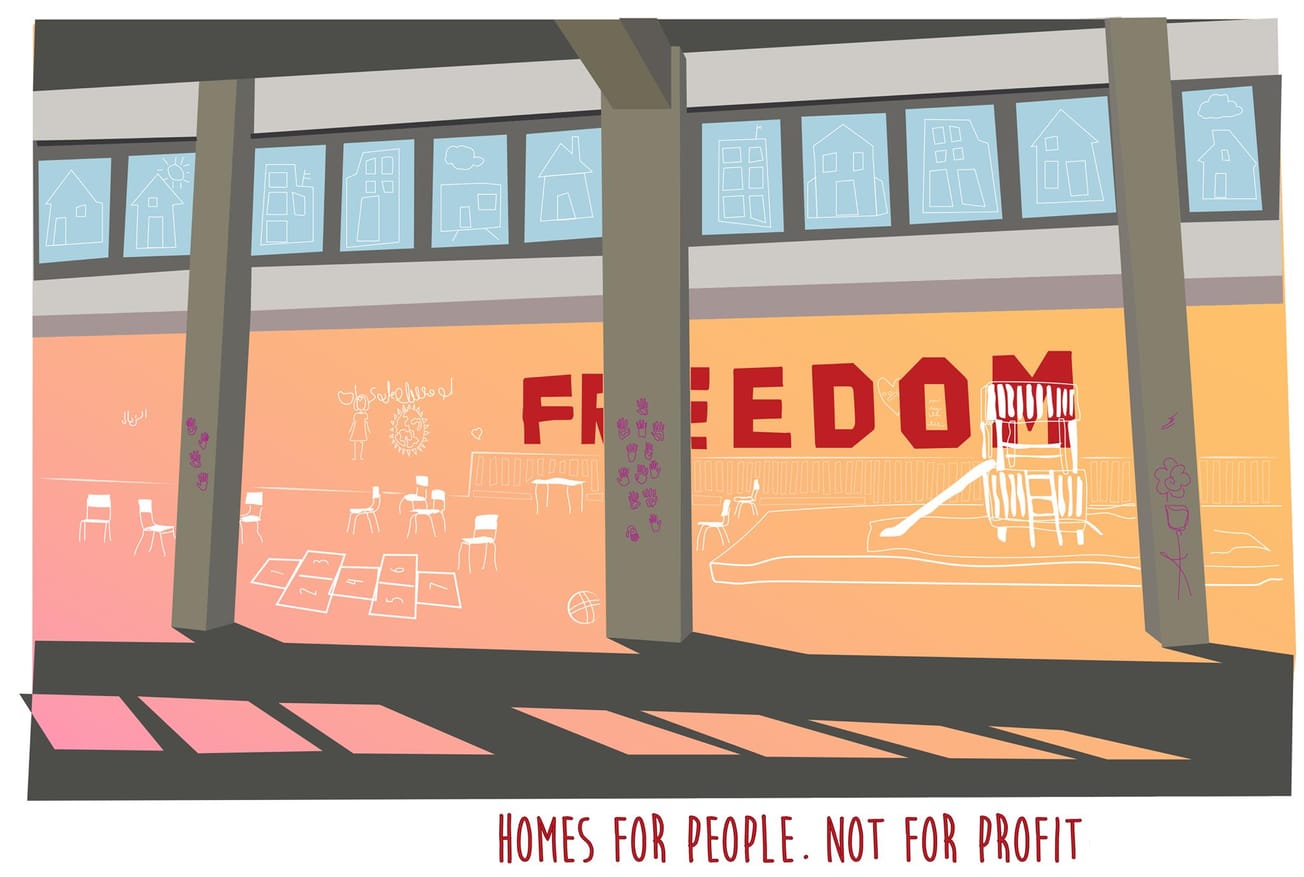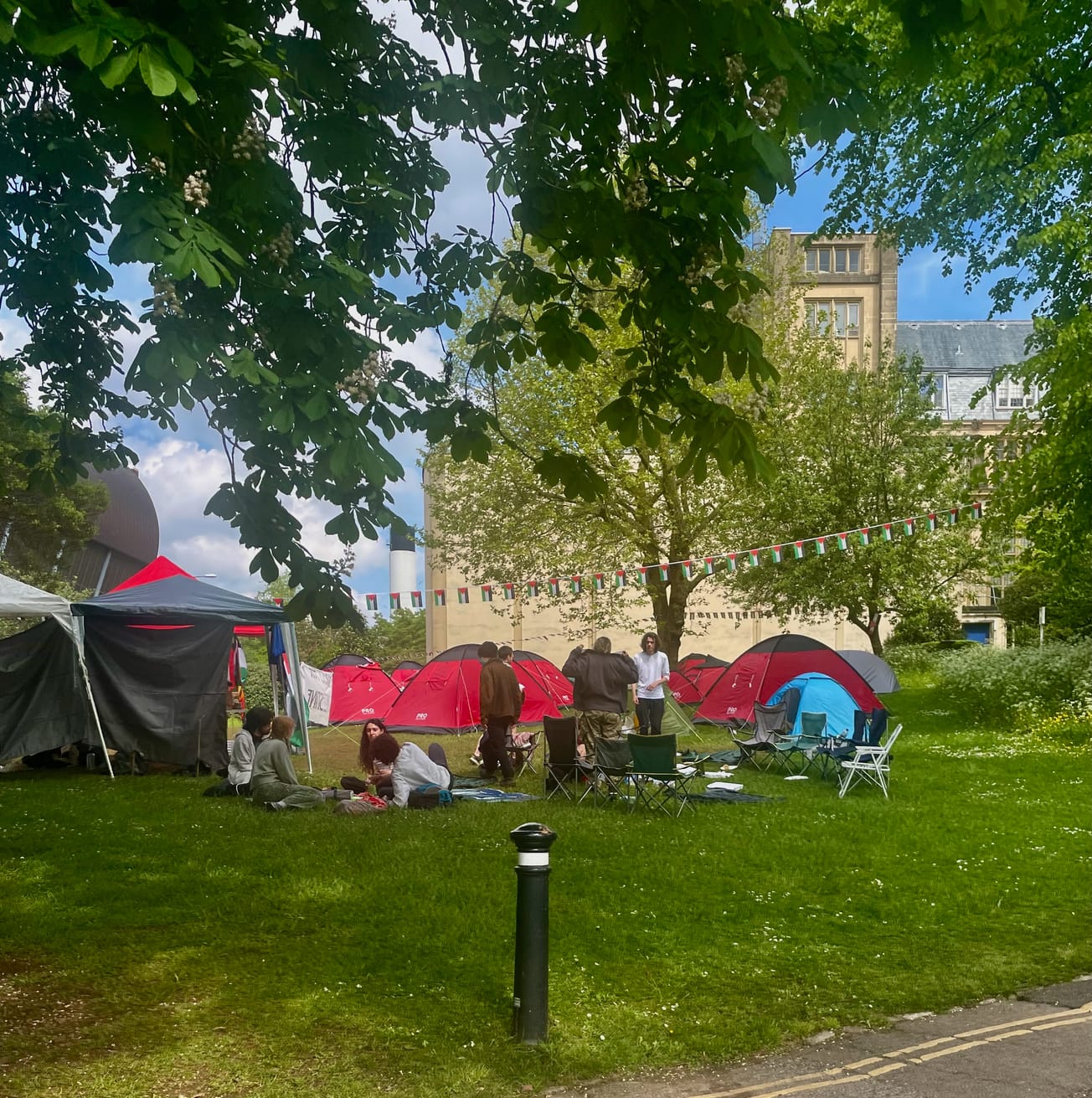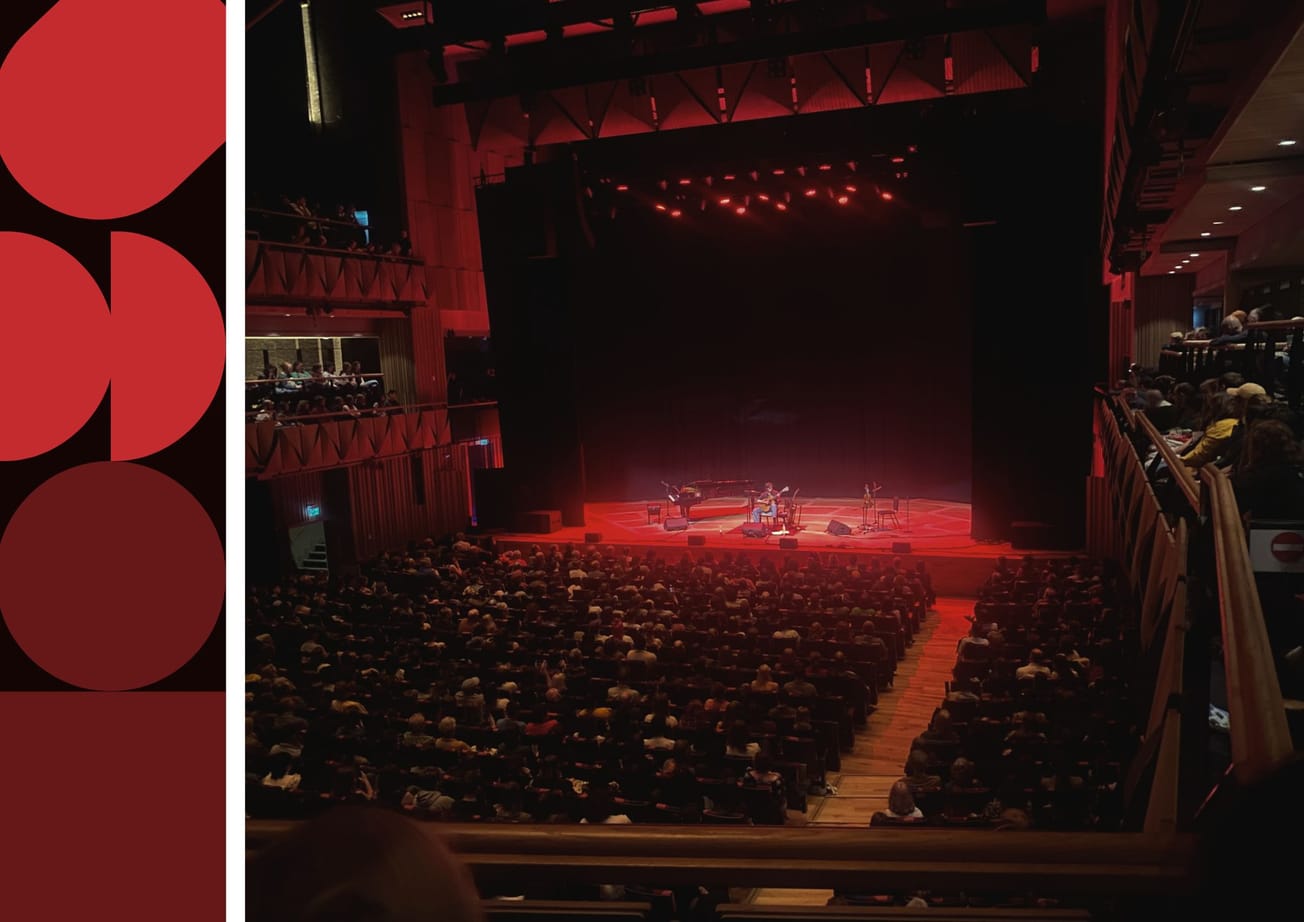By Emily Muir, Third Year Geography
In light of the unfolding of COP26 in recent weeks, Epigram took a deep-dive into the event, student delegate reactions, and consequent climate protests.
University of Bristol students travelled from the Richmond Building to Glasgow on 4 November by coach to COP26, the United Nations Climate Change Conference of the year spanning 12 days, from 31 October to 12 November. Students travelled by coach to avoid contributing to growing carbon emissions caused by domestic flights - a criticism of many attendees of COP26, such as Boris Johnson, who travelled from the summit via a private jet . Student delegates attended from many different schools of the university, including Science, Social Sciences, Law, Arts, and Life Sciences - the environment is an important issue relevant to everyone, no matter what you study.
From here, we attended both the official COP26 zones and the active events outside of this, such as the People’s Summit for climate justice and climate protests. COP26 was split into two zones, the Blue Zone for official talks and decision-making, and the Green Zone, an area at the Glasgow Science Centre dedicated to talks and events surrounding the climate crisis.

Events ranged from combining Indigenous knowledge and technologies, to exclusive environmental documentary showings. Meanwhile, special guests such as Steve Backshall and Tim Peake visited the zone to conduct Q&A sessions based around climate solutions. Other events included Gaelic spoken poetry which provided a gateway to lived realities of climate change and globalisation. Poets from the Scottish islands, such as Roseanne Watt from Shetland and Pàdraig MacAoidh and Donald S. Murray from Lewis, recounted their experiences of losing their homes to environmental disasters both through their physicality and native language.
However, the corporate realities of the shiny Green Zone were disappointing to some. Conversations overheard on the dedicated COP26 bus revealed official attendees struggling to find hotel rooms were taking domestic flights in each day to Glasgow. Food provided at COP26 was also served in single use plastics, and sponsors of the events were advertised in bright lights throughout the Green Zone Venue.
Claire Adamson, a University of Bristol delegate and law student, found that companies in the Green Zone were stating the efforts to cut carbon emissions, yet in reality had done very little, noting that ‘It’s actually horrific that they have a stand here and they’re trying to pretend what they’re doing is enough’.
Carlos Shanka, a University of Bristol delegate and President of the Bristol University Sustainability Team (BUST) found COP26 a disappointing solution to the climate crisis; ‘COP26 is arguably one of the most important events in the history of climate change. It’s not only about having ambitious pledges when they’re not even accomplishing that in many cases. It’s about achieving what you have pledged in the promises.’
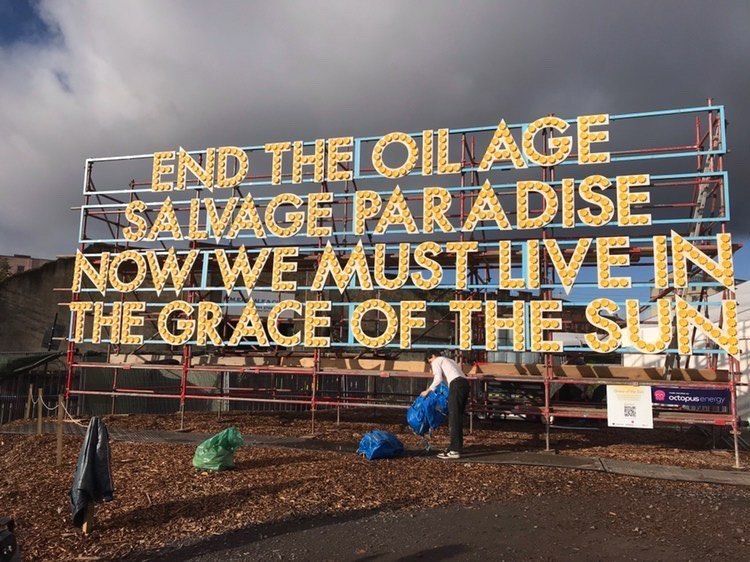
‘We’ve been through 25 COPs, we’ve been through the Kyoto Protocol, The Paris Agreement. It’s now or never. If it’s not in COP26, then when?’
Carlos also pointed out that the hypocrisy extends beyond the Green Zone into the political sphere of the Blue Zone; ‘In the Blue Zone they have the same typically politically correct debates and pledges. They don’t even write by themselves in some cases.’ It was also noted that ‘Indigenous peoples and communities don’t have much space in the Blue zone’, showing the under-representation of marginalised voices at COP26 despite climate change being a uniting issue.
The People’s Summit for Climate Justice provided an alternative COP26 coalition within Glasgow. It emphasised the importance of Indigenous voices and community action, rather than voices of companies and multi-national corporations.
Hearing first-hand from Indigenous peoples proved very emotional. Representative of the North Marinara Islands, Sheila Babauta, spoke of losing her home and environment in Saipan, speaking from a panel focusing on decolonising and demilitarisation. Sheila explained how important the water and land is to her community and witnessing its destruction resulted in a strong feeling of grief, especially for the future generations of Saipan. Stories of homes now rapidly disappearing due to anthropogenic climate change were hard-hitting and provided crucial insight into the debilitating effects of the climate crisis on communities in the Global South.
Protests throughout COP26 resembled a community coming together to fight against inaction over climate change. Chants that echoed around the streets of Glasgow included ‘What do we want? Climate Justice. When do we want it? Now’ to ‘Its bull! Come off it. Our planet’s not for profit.’ Attendees ranged from toddlers and children in school uniforms to charity organisations and the National Union of Students (NUS).
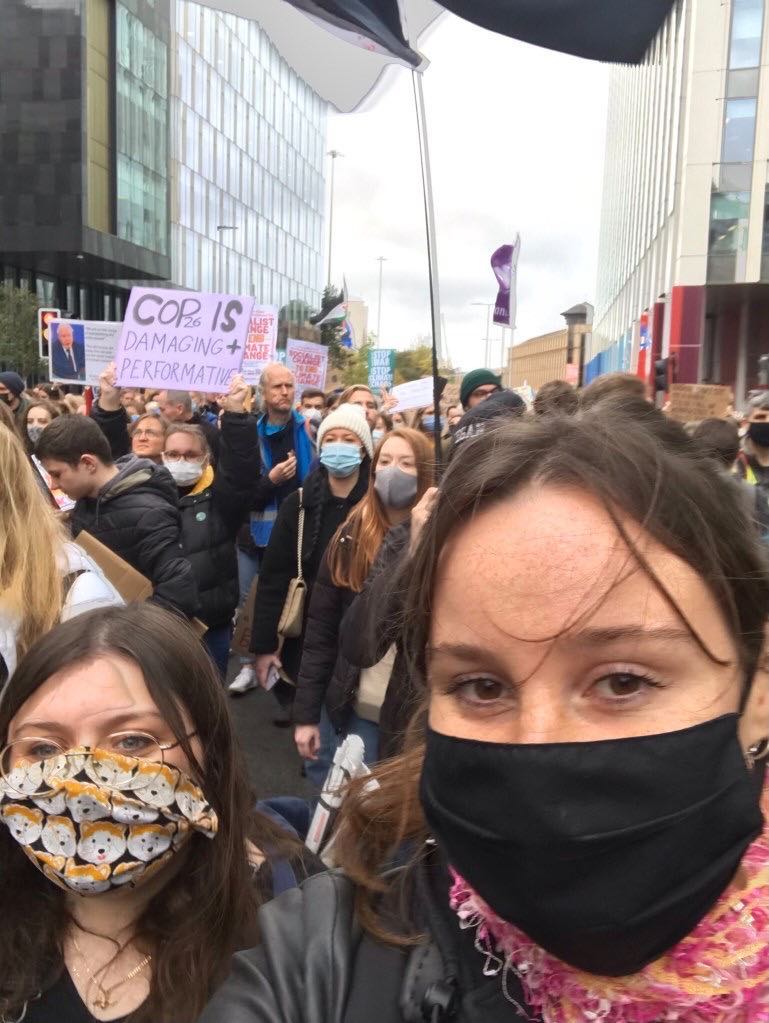
Witnessing these protests brought back the imminent reality of the climate crisis. Carlos Shanka also actively joined these protests and feels a sense of hope inspired by their push for resolution; ‘The reason why I have some hope is because of the people involved in COY16 (the 16th UN Climate Change Conference - a youth equivalent of COP26) and outside of the Blue and Green Zones. This is the reason I remain hopeful. I’ve seen incredible projects and ambition, and people willing to do whatever it takes to end this crisis.’
‘It’s now or never. We cannot afford having another summit full of empty promises.’
Featured Image: Isabel Townend

